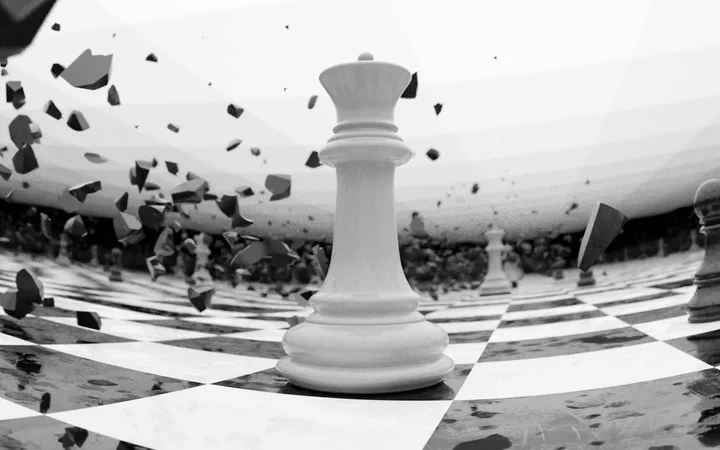Culture Reality
Why Your Organization’s Immune System Might Kill Your Strategy

Culture doesn’t support strategy. Culture IS strategy.
You can have the most brilliant customer insights, build the most sophisticated capabilities, outmaneuver your competition, and optimize your costs - but if culture resists your choices, none of it matters.
Culture is the immune system of organizations. When it encounters something foreign - a new way of thinking, a different approach to customers, an unfamiliar definition of value - it attacks. And unless you’re prepared for that immune response, culture will kill your strategy before it has a chance to prove itself.
The distribution company learned this lesson the hard way. Their strategic transformation didn’t fail because the market rejected it. It failed because their own culture rejected it.
The Cultural Hierarchy
To understand how culture killed strategy at the distribution company, you need to understand their cultural hierarchy.
Sales was at the top. Not just in terms of revenue generation, but in terms of organizational influence, decision-making power, and cultural identity. The company saw itself as a sales organization first, with everything else - operations, technology, finance, marketing - existing to support sales success.
This wasn’t accidental. The sales team had built the company’s most important customer relationships. They generated the revenue that funded everything else. They understood the market in ways that other departments couldn’t match.
But cultural hierarchies create cultural antibodies. When the CX team arrived with different ideas about customer value, they weren’t just proposing process changes - they were challenging the fundamental power structure of the organization.
The Language of Resistance
As tensions mounted between the sales team and the CX team, leadership faced a choice. They could challenge the sales culture that was resisting necessary change, or they could protect it by sacrificing the change agents.
They chose protection.
But here’s what made their choice so effective: the language they used to justify it.
With each reorganization, each downsizing, each leadership change, the retreat was positioned as “returning to our customer focus” and “aligning to our values.” The CX team wasn’t being eliminated because they were right and threatening - they were being eliminated because they had lost sight of what really mattered.
This language was brilliant in its deception. It made strategic failure sound like strategic clarity. It turned cultural resistance into cultural wisdom. It transformed the rejection of customer insights into the protection of customer relationships.
The Choice Between Realities
The most telling moment came when the president had to choose between the future his VP of Sales saw and the one his VP of Customer Experience saw.
Both were talented leaders. Both had valid perspectives about customer needs and market direction. Both were advocating for strategies they genuinely believed would benefit the organization.
But only one represented the cultural status quo.
The VP of Sales embodied everything the organization valued: relationship building, revenue generation, market knowledge, and customer loyalty. He spoke the language the culture understood and advocated for approaches the culture trusted.
The VP of Customer Experience represented change: new methods, different metrics, challenging assumptions, and unfamiliar priorities. She spoke a language the culture found foreign and advocated for approaches the culture viewed as threatening.
When the president was forced to choose, there was never really a choice at all. The VP of Customer Experience was gone within a month.
The Antibody Response
What happened next was predictable. With the threat neutralized, the cultural antibodies went to work eliminating any remaining traces of the foreign strategy.
Projects that had been championed by the CX team were quietly defunded. Technologies that supported self-service capabilities were deprioritized. Metrics that measured customer experience independently of sales performance were discontinued.
The organization’s immune system was thorough and efficient. Within six months, it was as if the customer experience transformation had never happened.
But the market hadn’t stopped changing. Customer expectations continued evolving. Competitors continued gaining ground. The evidence that had originally motivated the transformation strategy kept mounting.
The culture had successfully defended itself against internal change. But it couldn’t defend itself against external reality.
The Five-Year Wake-Up Call
It took five years for the distribution company to admit that their cultural choice had been a strategic mistake.
By then, their competitors had captured significant market share through the digital capabilities they had rejected. Customer satisfaction surveys consistently showed preference for competitors’ self-service tools and transparent pricing. New market entrants were building entire business models around the customer experience approaches they had abandoned.
The evidence was overwhelming and undeniable. The culture could no longer rationalize away the market reality.
But the cost of cultural resistance was enormous. They had lost market position, competitive advantage, customer relationships, and millions in revenue. More importantly, they had lost five years of organizational learning that could have kept them ahead of market changes instead of behind them.
The Cultural Lessons
Looking back, there were three critical interventions that might have changed the outcome:
Bring the Antibodies Along for the Ride: Instead of building CX capabilities in isolation, they could have involved the sales team in customer discovery. Let them hear directly from customers about digital preferences. Let them see the data firsthand. People have to see change to believe it, especially when it challenges deeply held cultural assumptions.
Force Future Focus: Leadership needed to challenge the organization’s backward-looking orientation. What got you here won’t get you there. But this requires more than inspirational speeches - it requires systematic examination of changing customer expectations and competitive threats that make cultural comfort impossible to maintain.
Coalition Building Over Capability Building: The most sophisticated capabilities in the world can’t overcome cultural resistance. Before investing in new teams and technologies, they needed to invest in cultural alignment. Change management isn’t a nice-to-have when implementing strategy - it’s the foundation everything else rests on.
The Strategic Tests for Culture Reality
Culture is the ultimate test of strategic coherence. Here are the questions every leadership team should ask:
The Conflict Test: When strategy conflicts with existing culture, which wins in practice? How do you know? What examples can you point to where strategic choices overcame cultural resistance?
The Language Test: How does your organization talk about change? Do you position necessary changes as threats to be managed or opportunities to be captured? What does the language reveal about cultural readiness for transformation?
The Power Test: Who has real influence in your organization, and what do they believe about your strategic direction? Are your most culturally powerful people allies or obstacles to the changes you need to make?
The Antibody Test: When your organization encounters unfamiliar ideas or approaches, what happens? Are they explored openly or attacked reflexively? How does your culture respond to information that challenges established beliefs?
The Choice Test: If you had to choose between protecting your current culture and implementing your strategy, which would you choose? What does that choice reveal about your commitment to strategic transformation?
Beyond the Five Realities
The distribution company’s story illustrates something crucial about strategic success: you can’t address these realities one at a time. They’re interconnected, interdependent, and mutually reinforcing.
Customer insights without capability support create frustration. Capabilities without competitive differentiation create waste. Competitive advantages without cost discipline create unsustainability. And none of it matters if culture rejects the fundamental premises of your strategy.
But when all five realities align - when customer insights drive capability development, when capabilities create competitive advantage, when competitive choices enable cost optimization, and when culture embraces the necessary changes - something powerful happens.
Strategy becomes more than a document or a plan. It becomes the operating system of your organization.
The Path Forward
If you’re leading strategic transformation in your organization, start with an honest assessment of all five realities:
Customer Reality: Do different parts of your organization serve different customer definitions? How will you resolve conflicts between customer insights and organizational assumptions?
Capability Reality: Are your new capabilities enhancing or competing with existing ones? How will you manage the transition from old strengths to new ones?
Competition Reality: What makes you legitimately different from alternatives? Where are you betting differently about the future than your competitors?
Cost Reality: What tradeoffs are you willing to make to fund transformation? Are you adding capabilities or replacing them?
Culture Reality: Who has the power to kill your strategy, and what do they believe about the changes you're proposing? How will you bring cultural influencers along on the transformation journey?
Because here’s what I’ve learned after watching countless strategies succeed and fail:
Strategy isn’t about being clever. It’s about being coherent.
And coherence requires aligning with all five realities, not just the comfortable ones.
The organizations that succeed don’t ignore uncomfortable realities - they face them directly and plan for them systematically. They understand that dropping any one reality eventually causes all the others to collapse.
The organizations that fail keep trying to have it both ways until the market forces them to choose.
Which organization will you be?
Photo by Hal Gatewood on Unsplash
Mini-series

The Five Realities That Shape Strategy
The difference between strategies that transform organizations and those that drain millions? Five realities that successful leaders face head-on while failing ones rationalize away. Learn to recognize and master them before they master you.
- How a Strategy With All the Right Pieces Still Failed
Five Realities Your Strategy Can't Ignore - Customer Reality
What Happens When Every Team Has a Different Customer in Mind - Capability Reality
Why New Strengths Often Undermine Old Ones - Competition and Cost Realities
How False Beliefs About Competition Lead to Strategic Paralysis - Culture Reality
Why Your Organization's Immune System Might Kill Your Strategy




